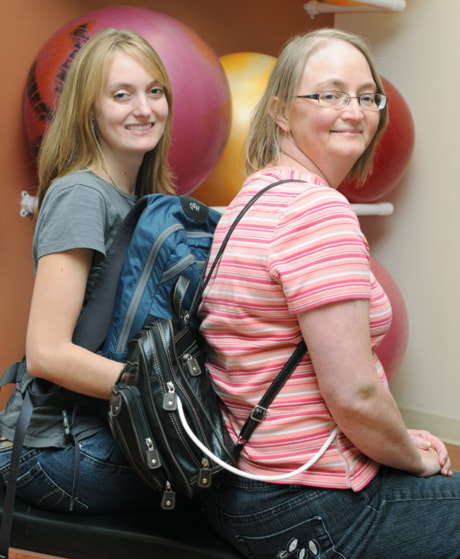KITCHENER, Ont. — In her mid-20s, Andrea Clegg had her world flipped upside down when she was diagnosed with life-threatening heart disease.
Skip ahead two years, and today the 27-year-old civil engineer is active, married and on the waiting list for a new heart, though in the meantime she’s dependent on a portable, mechanical heart pump.
“I’ve had it almost a year and it’s improved my life significantly,” Clegg said during an open house at the newly expanded St. Mary’s Cardiac Rehabilitation Program, where she is a patient.
“The cardiac rehab has been a major resource for me,” she said.
The facility was moved from St. Mary’s Hospital during the hospital’s expansion in 2004 and though the move was intended to be temporary, the hospital could no longer accommodate its ever-expanding patient base.
Last summer, it grew yet again, taking over another 195 square metres for a total of 585 square metres, including assessment and examination rooms, an educational classroom, new aerobic equipment, a stress test lab and washrooms.
Program manager Linda Brooks talked about the value of the facility, its large “multidisciplinary team” meaning patients have access to doctors, nurses, kinesiologists and social workers as well as dietitians who work together to help patients in several programs including the cardiac rehabilitation acute program as well as the alumni program, the chronic obstructive pulmonary disease activation program, diabetes health management, and the Solutions weight management program.
Once a patient has received diagnoses, the facility is able to provide all necessary services, eliminating the need to travel to outside services, she said.
Pam Ditner is one of the program’s alumni and she too is alive because of the mechanical heart pump she carries around in a large shoulder purse while waiting for a heart transplant because her own heart no longer functions.
“The bag weighs about eight pounds” (3.6 kilograms), she said, pointing out the two battery packs that last about 14 hours, as well as the controller connected directly to her heart by a long, white wire snaking under her shirt and through her abdomen.
Before receiving the mechanical heart, she could barely walk.
“The facility is great here,” she said. “For me to come here after diagnoses and be told you can exercise, you have no clue what you can do. But you have somebody here. They’re checking on you. It’s really great and improved my confidence, what I can and cannot do.
“Four months after the pump was put in, I could walk three kilometres. It’s pretty incredible.”
Most of the programs at the facility are covered under provincial health insurance, though often patients feel so supported by the knowledgeable staff that they don’t want to leave once their health is stabilized.
They are usually willing to pay the costs to maintain the advances they are making in the program.
“We see about 60 to 70 patients a month,” said Brooks, adding right now they are helping patients from 24 to 92 years old manage their disease, but they have big plans for the future.
“Next step, we focus on disease prevention,” she said.
